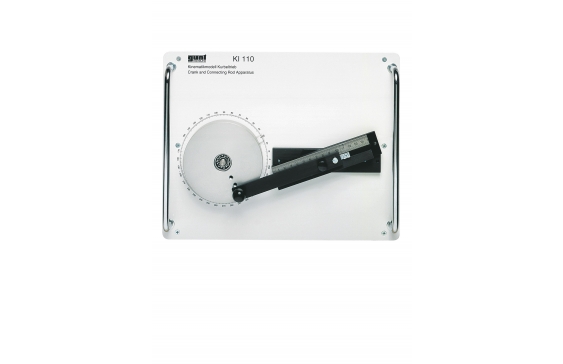KI 110 Kinematic model: crank mechanism

The crank mechanism is the functional group of machines that converts a uniformly rotating (rotational) motion into a reciprocating (translational) motion or vice versa. Crank mechanisms are used in engines, pumps or presses.
The KI 110 unit can be used to demonstrate this conversion with either a fixed or oscillating cylinder. The experimental unit comprises a crank disk, connecting rod and cylinder. The connecting rod is connected to the crank disk on one side via a crank. Changing the position of the crank on the crank disk adjusts the crank radius in three positions.
At the other end, the connecting rod is connected to the cylinder. This end models the piston. Simply turning a screw makes it possible to block the pivoting cylinder and, thus, to demonstrate a crank mechanism with either a fixed or oscillating cylinder.
The angle is adjusted using the crank disk; an angle scale is integrated into the base plate. A millimetre-precise steel ruler is attached to the cylinder to measure the stroke.
The elements are mounted on a base plate. Two handles make it easy to carry and stack the unit.
- crank mechanism with fixed or oscillating cylinder
Crank disk
- anodised aluminium
- mounted on ball bearings
Crank radius
- 25mm
- 37,5mm
- 50mm
Connecting rod
- aluminium, anodised black
Cylinder
- stroke 0…100mm
- investigation of a crank mechanism
- adjustment of the crank radius at three positions of the crank on the crank disk
- adjustment of the angle by turning the crank disk
- measure the stroke on the cylinder
- pivoting cylinder can be blocked to study the
crank mechanism with either a fixed or oscillating cylinder
- crank mechanism with fixed and oscillating cylinder
